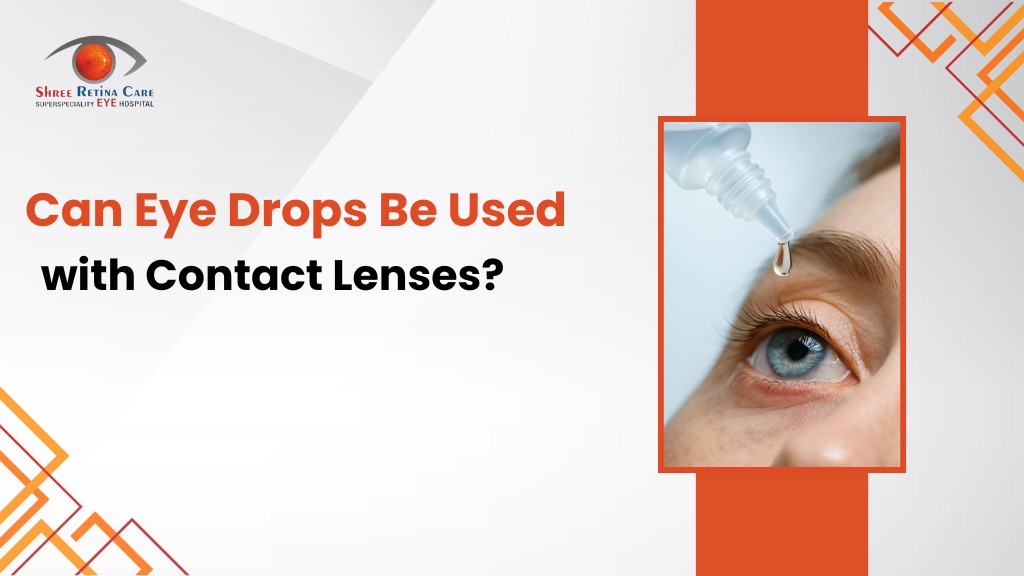Can Eye Drops Be Used with Contact Lenses?
For millions of contact lens users, keeping eyes comfortable throughout the day is a common challenge. Dryness, irritation, or redness can make wearing contact lenses uncomfortable, prompting many to ask: “Can I use eye drops with contact lenses?” Understanding the types of drops, proper usage, and what to avoid is essential for maintaining eye health and prolonging lens comfort.
Understanding Contact Lenses
Contact lenses are thin, curved lenses placed directly on the surface of the eye to correct vision problems like myopia, hyperopia, or astigmatism.
Types of Contact Lenses
- Daily Disposable Contact Lenses
- Worn for a single day and discarded
- Minimize risk of infections and debris accumulation
- Convenient for busy users
-
One Day Disposable Contact Lenses
- A subtype of daily disposables
- Ideal for occasional use or travel
- Require no cleaning solution
-
Monthly or Biweekly Lenses
- Reusable lenses cleaned with contact solution
- Require strict hygiene and proper storage
-
Specialty Lenses
- Toric lenses for astigmatism
- Multifocal lenses for presbyopia
- Therapeutic or medical lenses for eye conditions
Why Eye Drops Are Needed with Contact Lenses
Wearing contact lenses can reduce tear circulation, leading to dry or irritated eyes. Common causes include:
- Prolonged screen time
- Air conditioning or dry climates
- Allergies or environmental irritants
- Extended lens wear
Symptoms often include:
- Dryness and discomfort
- Redness
- Blurry vision due to inadequate lubrication
Using the right contact eye drops can relieve these symptoms and improve comfort for lens contact lenses users.
Types of Eye Drops Compatible with Contact Lenses
Not all eye drops are safe for use with contacts and lenses. Here’s a breakdown of types that are compatible:
1. Lubricating or Rewetting Drops for Contacts
- Specially formulated for contact lens users
- Restore moisture without damaging the lenses
- Can be used multiple times a day
- Helps with daily disposable contacts or reusable lenses
2. Saline or Preservative-Free Drops
- Help rinse and hydrate lenses
- Preservative-free drops are preferred for sensitive eyes
3. Contact Lens Eye Drops for Allergies
- Mild antihistamine drops compatible with contacts
- Reduce redness and itching caused by pollen or dust
4. Rewetting Drops from Trusted Brands
- Should be approved for lens contact lenses use
- Can improve comfort during extended lens wear
Tip: Always check the label for phrases like “safe for contact lenses” or “contact lens eye drops.
Types of Eye Drops to Avoid with Contact Lenses
Using the wrong drops can damage lenses or harm eyes.
Avoid:
-
Prescription Eye Drops Not Meant for Contacts
- Drops for glaucoma, antibiotics, or steroids may not be safe to use while wearing lenses
- Drops for glaucoma, antibiotics, or steroids may not be safe to use while wearing lenses
-
Redness-Relief Drops
- Often contain vasoconstrictors that can irritate lenses
-
Oil-Based or Makeup-Related Drops
- Can coat lenses and reduce oxygen transmission
-
Non-Sterile Homemade Solutions
- Increase risk of eye infections
How to Use Eye Drops Safely with Contact Lenses
-
Check the Label
Ensure the drops specify compatibility with contact lenses.
-
Wash Hands Thoroughly
Before touching lenses or eyes, clean your hands to avoid contamination.
-
Use Rewetting Drops Correctly
- Tilt your head back, pull down the lower eyelid, and drop the recommended amount.
- Blink gently to distribute the drop across the lens surface.
-
Avoid Unapproved Drops
Never use regular eye drops while wearing lenses unless labeled safe for contacts.
-
Remove Lenses if Needed
For drops not safe for lens contact lenses, remove lenses, apply drops, wait at least 15 minutes, then reinsert lenses.
Special Considerations for Daily Disposable Contact Lenses
Daily disposable contacts are convenient because you discard them after use. Even so, dryness or irritation can occur, and safe contact eye drops are still useful. Avoid using incompatible drops as they may damage the lenses or your eye vision.
Tips for Healthy Eyes with Contact Lenses
- Limit Wear Time: Avoid wearing lenses beyond recommended hours.
- Stay Hydrated: Drink plenty of water to maintain tear production.
- Use Clean Contact Solution: Properly store lenses in fresh contact solution.
- Regular Eye Exams: Schedule eye exams to monitor lens fit and eye health.
- Avoid Sleeping in Lenses: Unless prescribed, sleeping in lens contact lenses increases infection risk.
- Monitor for Symptoms: Redness, pain, or blurred vision may indicate irritation or infection—consult your eye doctor immediately.
Why Consult an Eye Doctor
Using eye drops with contact lenses might seem simple, but improper use can lead to:
- Eye infections
- Corneal abrasions
- Reduced oxygen supply to the eyes
- Lens damage
A consultation at an eye doctor ensures that you use the right drops for your specific contact lenses and eye lenses, while also monitoring for underlying conditions like dry eye syndrome or eye problems caused by long-term lens wear.
Conclusion
Yes, eye drops can be used with contact lenses, but only if they are specifically formulated for contacts and lenses. Using the right contact lens eye drops or contact eye drops can:
- Relieve dryness and irritation
- Improve comfort for daily disposable contact lenses
- Support long-term eye care and eyesight lenses health
Always avoid non-approved drops, consult your eye doctor , and follow proper hygiene practices.
Maintaining healthy eyes while using lens contact lenses is simple with the right information, safe products, and guidance from experienced eye specialists.

